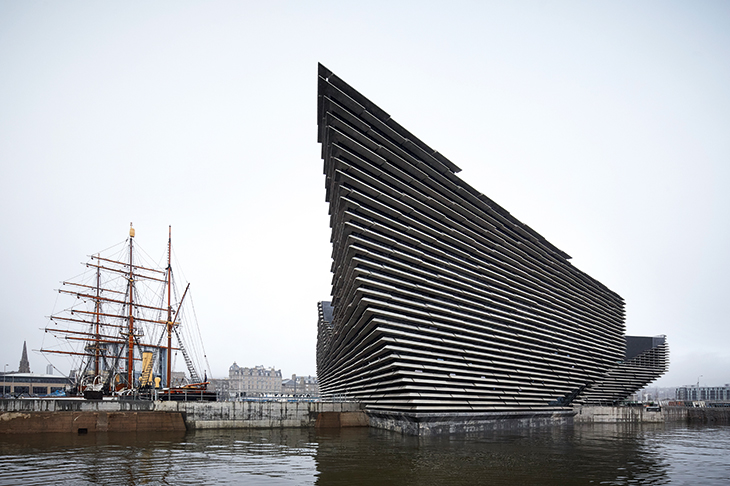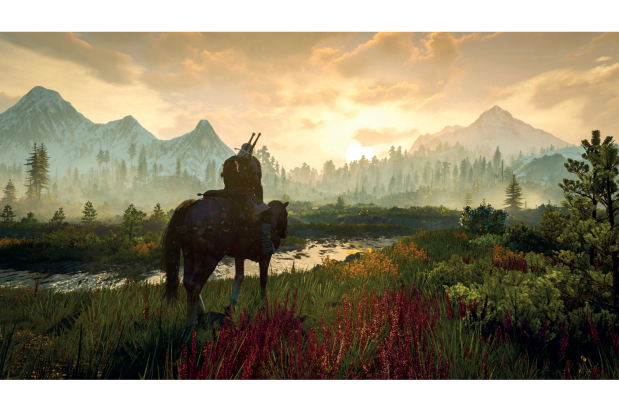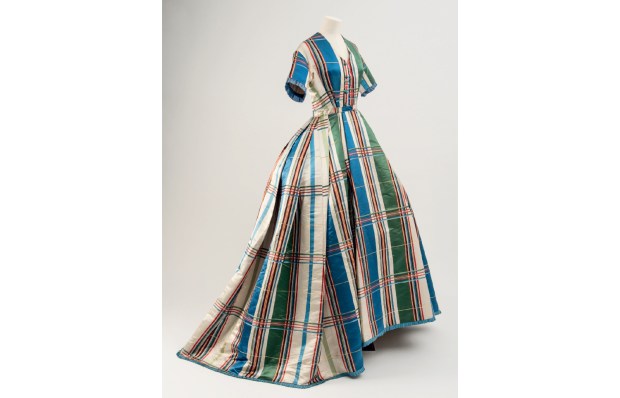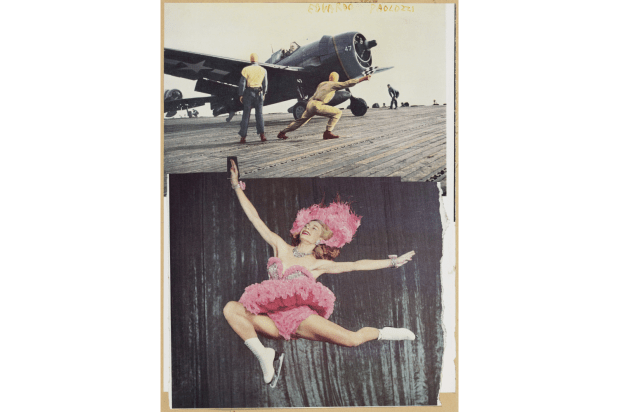Not so long ago, the Dundee waterfront was presided over by a great triumphal arch, built to commemorate Queen Victoria’s visit in 1844. It was an imposing piece of decorative architecture, 84 feet high, and it dominates most views of the city painted over the ensuing century. It became a cherished symbol of Dundee but in 1964 they knocked it down and used the rubble as infill for a thuddingly insensitive road system that would effectively destroy the southern face of the city.
Mary Shelley stayed in Dundee in her youth and later wrote of the ‘blank and dreary’ northern shores of the Tay. It’s a description still familiar to many, although the region’s nadir arrived long after Shelley. The destruction of the arch heralded decades of dismal urban planning. The Dundee-born poet Don Paterson has spoken of watching the council for half a century confuse ‘urban regeneration with a post-apocalypse’.
For too long, Dundee was a place cut off from its own river, the connection between town and water severed by intrusive road development and ugly building. The aim of an ongoing £1 billion investment in the area has been to reverse the devastation of such neglectful planning, regenerate the docklands and revitalise what was once the commercial heart of the city.
At Craig Harbour, beside the train station, stands the latest, and most significant, element of this ambitious project. The first V&A museum outside London will open its doors here on 15 September, setting sail with a huge exhibition (seen in London earlier this year) dedicated to the design and culture of ocean liners. After almost a decade of planning and construction, Dundonians will, at last, be able to see what the £80 million lavished here has bought them.
It’s quite a lot. Like a multistorey car park on the run, Kengo Kuma’s building twists and lurches towards the water with brutal elegance. The horizontal stratigraphy of the 2,500 individually designed panels of reconstituted stone that clad the structure serve to elevate it, bringing a surprising lightness to a form that, glimpsed from a distance, can look deceptively torpid. It’s a building that reveals its charm up close. The nautical jut of the angled walls, none of them straight, offers a complimentary interplay with the delicate rigging of its neighbour, R.F. Scott’s Dundee-built polar expedition vessel RRS Discovery, while little vignettes of the river are framed by the voids between and beneath the walls. It invites exploration, drawing the pedestrian towards the water. To visit is to understand what Kuma meant when he said that a vertical façade would ‘reject the people’. This is a construction that embraces.
For all its ingenuity and technical sophistication, the V&A is a building that feels almost modest, much less ostentatious than the initial proposals indicated. If a building can be quietly confident this is it. As you walk along the Nethergate, Dundee’s main drag, tantalising glimpses of the structure draw the eye down side streets to where it squats, like a docked ship, at the water’s edge. For a city built on seafaring and trade, this is apt and it feels like an echo, resonating back to a time when the docks clattered with unloading jute bales and the slippery spoils of whaling. The stonework matches the dusky browns of the old city, too, and the building already looks more comfortable in its situation than the glitzy Zaha Hadid-designed Transport Museum does on Clydeside.
Comparisons can be drawn between Dundee and Glasgow, Scotland’s two great sea-going, ship-building cities, but Dundee has never enjoyed quite as profound and discrete an artistic identity as Glasgow. There was no Tayside equivalent of the Glasgow style of design, embodied by Charles Rennie Mackintosh, nor any particular flourishing of a group of painters to rival the Glasgow Boys, either old or new.
Nevertheless, civic enthusiasm for the arts is a Dundee tradition, embodied by wide support for the renowned Repertory Theatre, the boisterous Dundee Contemporary Arts and the fine neo-gothic McManus Galleries. Recently renovated with some vision, the McManus exhibition rooms have been showcasing Dundee’s culture since 1869 and a visit to the museum today reminds us that there is more to the ‘City of Discovery’ than the endlessly recycled jute, jam and journalism line.
It’s an old tune that, and well outdated. The jute was the first to go, doomed a century ago when Calcutta took over as global leader; the whaling died with it. With the jute factories closing, Dundee no longer required the gallons of whale oil that had been used to soften tough jute fibres. Bottles of dirty yellow ‘Sperm Oil’ stare reproachfully from displays in the McManus, a reminder that some changes are for the better. The jam is long gone too, and Keiller’s famous bitter marmalade was latterly produced in Cambridgeshire, for export only.
Of the three Js, only journalism has clung on, with DC Thomson still publishing a mighty range of titles including several of Scotland’s more successful newspapers and, of course, the Beano. There’s a strong case to be made for the cartoonist Dudley D. Watkins, of Oor Wullie and The Broons fame, to be recognised as the city’s greatest artist, although admirers of James McIntosh Patrick’s minutely detailed landscapes or the range of Alberto Morrocco might dispute this.
Cartoons, graphics and illustration are an enduring, and ever-evolving, element of Dundee’s cultural mix. The city was an early player in the video-gaming industry, producing both the influential Lemmings and the notorious Grand Theft Auto. With 10 per cent of British games companies now based on Tayside, the culture is thriving and well supported by the sector-leading tech and design courses available at the city’s two universities.
Games will take their rightful place in the Scottish Design Galleries of the V&A alongside Ayrshire needlework, Hunter wellies and the long-awaited installation of Mackintosh’s Oak Room. This panelled structure has been in storage since it was dismantled and moved from Miss Cranston’s tea room in Glasgow around the same time Dundee was destroying its Royal Arch. With original Mackintosh designs now at a premium, it is important to have this masterpiece resurrected in a place where it can be appreciated by an anticipated half a million visitors each year.
In the grounds of Dundee’s hospital stands the original Maggie’s Centre. Designed by Frank Gehry, it hunkers on a green promontory, looking down on the Tay from thick, succouring walls beneath a rolling metal roof. It remains to be seen if the V&A can equal the impact Gehry’s Guggenheim has had on Bilbao, but its existence surely confirms that the city is now anything but ‘blank and dreary’.
Got something to add? Join the discussion and comment below.
Get 10 issues for just $10
Subscribe to The Spectator Australia today for the next 10 magazine issues, plus full online access, for just $10.
You might disagree with half of it, but you’ll enjoy reading all of it. Try your first month for free, then just $2 a week for the remainder of your first year.














Comments
Don't miss out
Join the conversation with other Spectator Australia readers. Subscribe to leave a comment.
SUBSCRIBEAlready a subscriber? Log in